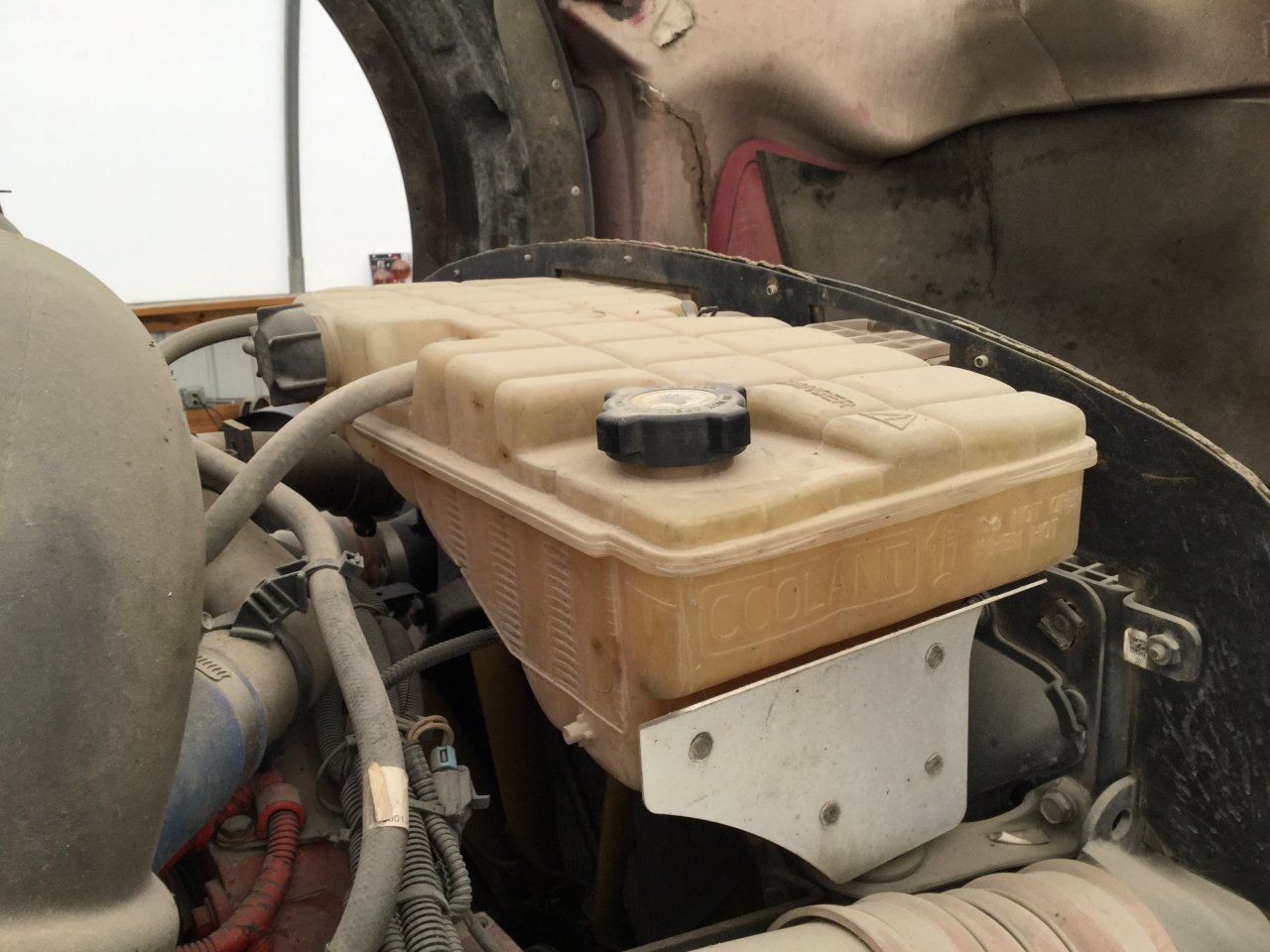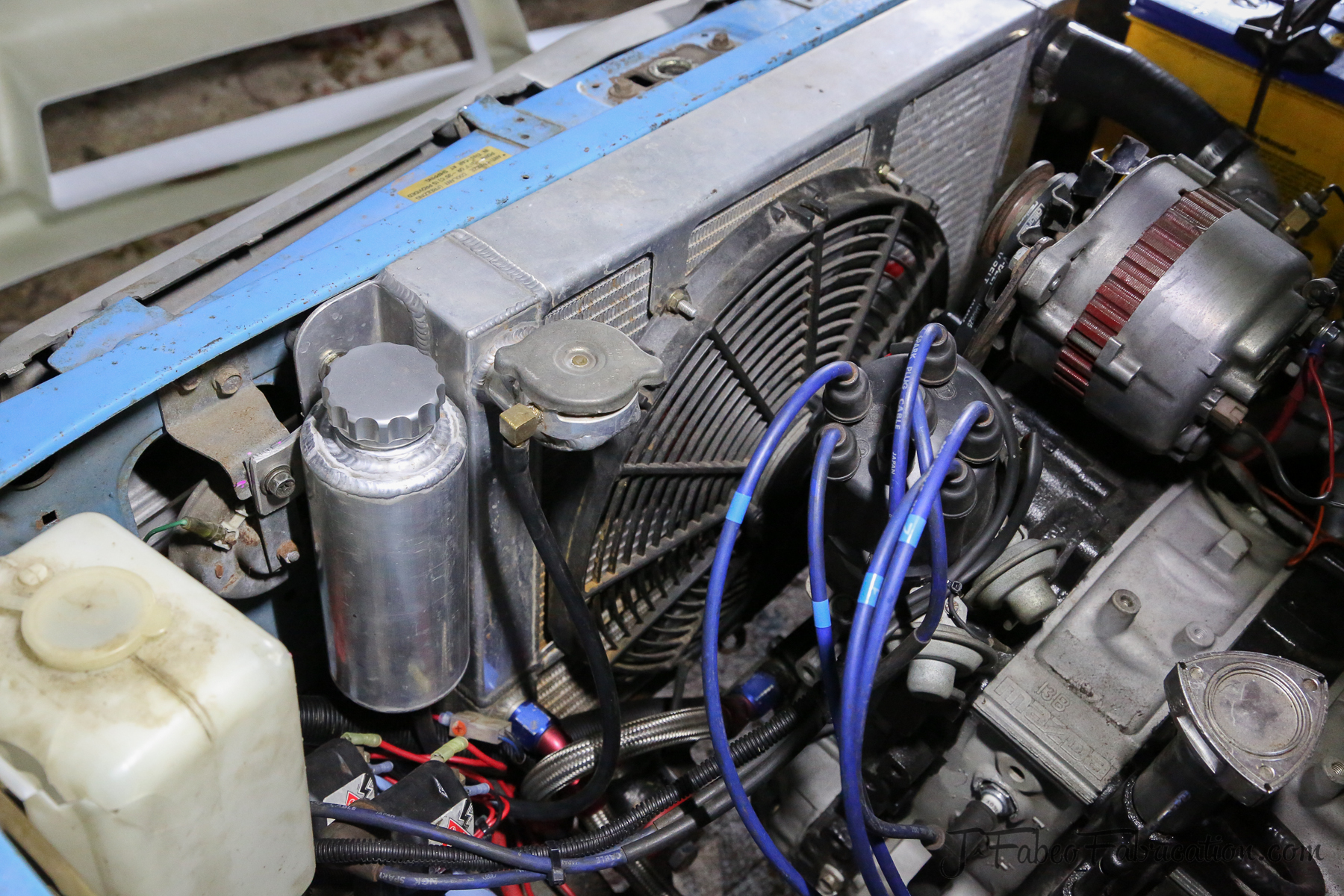Have you ever noticed a small tank next to your car’s radiator? That’s the coolant expansion tank, and it plays a vital role in maintaining your engine’s health. While many drivers may overlook this component, it is crucial in keeping your car’s engine running smoothly. In this blog post, we’ll dive into coolant-expansion tanks and why they are an essential part of your vehicle’s cooling system. Get ready to learn more about this often-overlooked but essential component!
The Functionality and Importance of a Coolant-Expansion Tank
The coolant-expansion tank may be small, but its role in maintaining engine health is crucial. This tank is designed to hold excess coolant that expands as the engine heats up. Without it, the excess coolant would overflow and be lost, leading to a loss in coolant and potentially causing the engine to overheat.
The functionality of the coolant-expansion tank lies in its ability to regulate the flow and pressure of coolant within the engine. When the engine reaches its operating temperature, the coolant expands and flows into the expansion tank, relieving any excess pressure. Then, when the engine cools down, the coolant is drawn back into the engine, maintaining a consistent level and preventing air from entering the cooling system.
How the Coolant-Expansion Tank Contributes To Engine Health
The coolant-expansion tank plays a critical role in ensuring the overall health and performance of your engine. It contributes to engine health in several ways. The expansion tank helps maintain the proper level of coolant in the engine. As the engine heats up, the coolant expands, and without the expansion tank, this excess coolant would overflow and be lost.
By providing a space for the coolant to expand into, the expansion tank prevents this loss and ensures that the engine always has enough coolant. The expansion tank helps regulate the flow and pressure of coolant within the engine. When the engine reaches its operating temperature, the coolant expands and flows into the expansion tank, relieving any excess pressure.
This helps prevent overheating and damage to the engine. The expansion tank helps prevent air from entering the cooling system. As the engine cools down, the coolant is drawn back into the engine from the expansion tank, ensuring no air pockets within the cooling system. Air pockets can disrupt the flow of coolant and lead to overheating.
Signs of Problems with Your Coolant-Expansion Tank
It’s important to watch for signs that your coolant-expansion tank may be experiencing problems. One telltale sign is if you notice coolant leaking from the tank or around the connected hoses. This can indicate a crack or a faulty seal, which should be addressed immediately to prevent further damage to your engine.
Another sign of a problem is if you consistently have to add coolant to the expansion tank. While it is normal to occasionally top off the coolant, if you find yourself frequently adding coolant, it could indicate a leak or a malfunctioning expansion tank. If you notice that your engine is overheating or running hotter than usual, it could be a sign of a malfunctioning coolant-expansion tank.
The tank plays a crucial role in regulating the flow and pressure of coolant so that any issues can result in inadequate cooling and overheating. If you see any signs of rust, corrosion, or build-up in your coolant-expansion tank, it could be a sign that it needs to be cleaned or replaced. These issues can restrict the flow of coolant and hinder the proper functioning of the tank.
 The Correlation between Coolant-Expansion Tanks & Radiator Over-flow Bottles
The Correlation between Coolant-Expansion Tanks & Radiator Over-flow Bottles
The correlation between coolant-expansion tanks and radiator over-flow bottles is an important aspect of understanding the cooling system in a vehicle. While the coolant-expansion tank primarily functions to regulate the flow and pressure of coolant within the engine, the radiator overflow bottle acts as a backup to collect any excess coolant that is expelled from the radiator due to pressure build-up.
These two components work hand in hand to ensure that the cooling system operates efficiently and effectively. When the engine heats up, the coolant expands and flows into the expansion tank. If the pressure continues to increase, the excess coolant is then transferred into the radiator overflow bottle. Conversely, when the engine cools down, the coolant is drawn back into the engine from the expansion tank and radiator overflow bottle, maintaining the proper coolant level in the system.
Tips for Choosing the Right Radiator Overflow Bottles for Your Vehicle
Choosing the right radiator overflow bottle for your vehicle is crucial for maintaining the health and efficiency of your engine’s cooling system. Here are some helpful tips to ensure you make the right choice:
- Consider the capacity: The size of the radiator overflow bottle should match the cooling system capacity of your vehicle. Make sure to check the manufacturer’s specifications or consult with a professional to determine the appropriate size.
- Material quality: Opt for a radiator overflow bottle made from high-quality materials such as durable plastic or aluminum. This will ensure longevity and resistance to heat and pressure.
- Compatibility: Ensure the radiator overflow bottles match your vehicle’s make and model. Check for compatibility information from the manufacturer or consult with a trusted mechanic.
- Ease of installation: Look for a radiator overflow bottle that is easy to install. It should come with clear instructions and be designed to fit seamlessly into your vehicle’s cooling system.
- Warranty: Consider purchasing a radiator overflow bottle with a warranty. This will provide you with peace of mind and protection in case of any defects or malfunctions.
Maintaining and Cleaning Your Coolant-Expansion Tank
Maintaining and cleaning your coolant-expansion tank is essential for keeping your engine running smoothly and preventing any potential issues. Regular maintenance will ensure the tank is free from debris, rust, or any build-up that could hinder its functionality. To clean the coolant-expansion tank:
- Start by removing it from the engine.
- Empty any remaining coolant and inspect the tank for any signs of damage or corrosion.
- If necessary, use a mixture of water and a mild detergent to clean the tank, ensuring that all surfaces are thoroughly scrubbed.
- Rinse the tank with clean water to remove any residue.
After cleaning, it’s important to check the coolant levels and refill the tank if necessary. Be sure to use the correct type of coolant recommended by the manufacturer.
The Benefits of Regularly Maintaining Your Coolant-Expansion Tank
Regularly maintaining your coolant-expansion tank offers several important benefits for your engine and overall vehicle performance. Regular maintenance helps to prevent overheating and potential engine damage. By keeping the coolant-expansion tank clean and free from debris, you ensure that coolant can flow freely and efficiently through the system, regulating temperature effectively.
Another benefit of regular maintenance is prolonging the lifespan of your engine. By maintaining the proper level of coolant and preventing any issues with the coolant-expansion tank, you can prevent unnecessary wear and tear on your engine. This can save you from costly repairs and extend the overall longevity of your vehicle.
Regular maintenance of your coolant-expansion tank also contributes to better fuel efficiency. When the cooling system works optimally, the engine operates more efficiently, leading to improved fuel economy and lower emissions. By regularly maintaining your coolant-expansion tank, you are ensuring that your engine stays in top condition. This can enhance performance and overall driving experience, providing peace of mind and a smoother ride.
Common Misconceptions about Coolant-Expansion Tanks
There are a few common misconceptions about coolant-expansion tanks that many car owners may need to be made aware of. One misconception is that the expansion tank is simply a reservoir for holding extra coolant. While it does hold excess coolant, its main function is to regulate the flow and pressure of coolant within the engine. It plays a crucial role in preventing overheating and maintaining engine health. Another misconception is that coolant-expansion tanks do not require regular maintenance.
However, like any other component in your vehicle, the expansion tank needs to be regularly inspected, cleaned and maintained. Debris, rust, and build-up can hinder its functionality, leading to potential issues with the cooling system. Some people mistakenly believe that all coolant-expansion tanks are the same and that any type will do. However, it is important to choose the right expansion tank for your vehicle based on its make and model, as well as its capacity and material quality.
FAQ’s
1. How often should I check my coolant-expansion tank?
It is recommended to check your coolant-expansion tank at least once every few months. However, it is always a good idea to check it more frequently, especially during extreme weather conditions or before long trips.
2. Can I use any coolant in my expansion tank?
No, it is important to use the correct type of coolant recommended by the manufacturer. Using the wrong type of coolant can cause damage to your engine and cooling system.
3. Can I replace my coolant expansion tank myself?
While it is possible to replace your coolant expansion tank yourself, it is recommended to have it done by a professional mechanic. They have the necessary tools and expertise to ensure the replacement is done correctly.
4. How do I know if my coolant-expansion tank needs to be cleaned?
If you notice any signs of rust, corrosion, or build-up in your coolant-expansion tank, it indicates that it needs to be cleaned. Additionally, if you experience any issues with overheating or coolant leakage, it is a good idea to have the tank cleaned and inspected.
5. Can I drive my car without a coolant-expansion tank?
No, it is not recommended to drive your car without a coolant-expansion tank. The tank plays a crucial role in regulating the flow and pressure of coolant within the engine, and driving without one can lead to severe engine damage.
Conclusion
In summary, the coolant-expansion tank is a small but crucial component of your car’s cooling system. It plays a vital role in maintaining engine health by regulating coolant flow and pressure, overheating, and preventing air pockets from entering the system. Regular maintenance and cleaning of the expansion tank are essential for optimal engine performance and longevity. By understanding the importance of this often overlooked component, you can ensure that your engine stays cool and your vehicle runs smoothly. So next time you see that small tank next to your car’s radiator, remember how vital it is for your engine’s health.
| Other Good Articles to Read |
| skank blogs |
| unreal blogs |
| tba blogs |
| all city forums |
| dany blogs |
| refuge blogs |
| the music blogs |
| key forums |
| the big blog theory |
| joe blogs |
| blogs 4 me |
| Blogs Emon |



